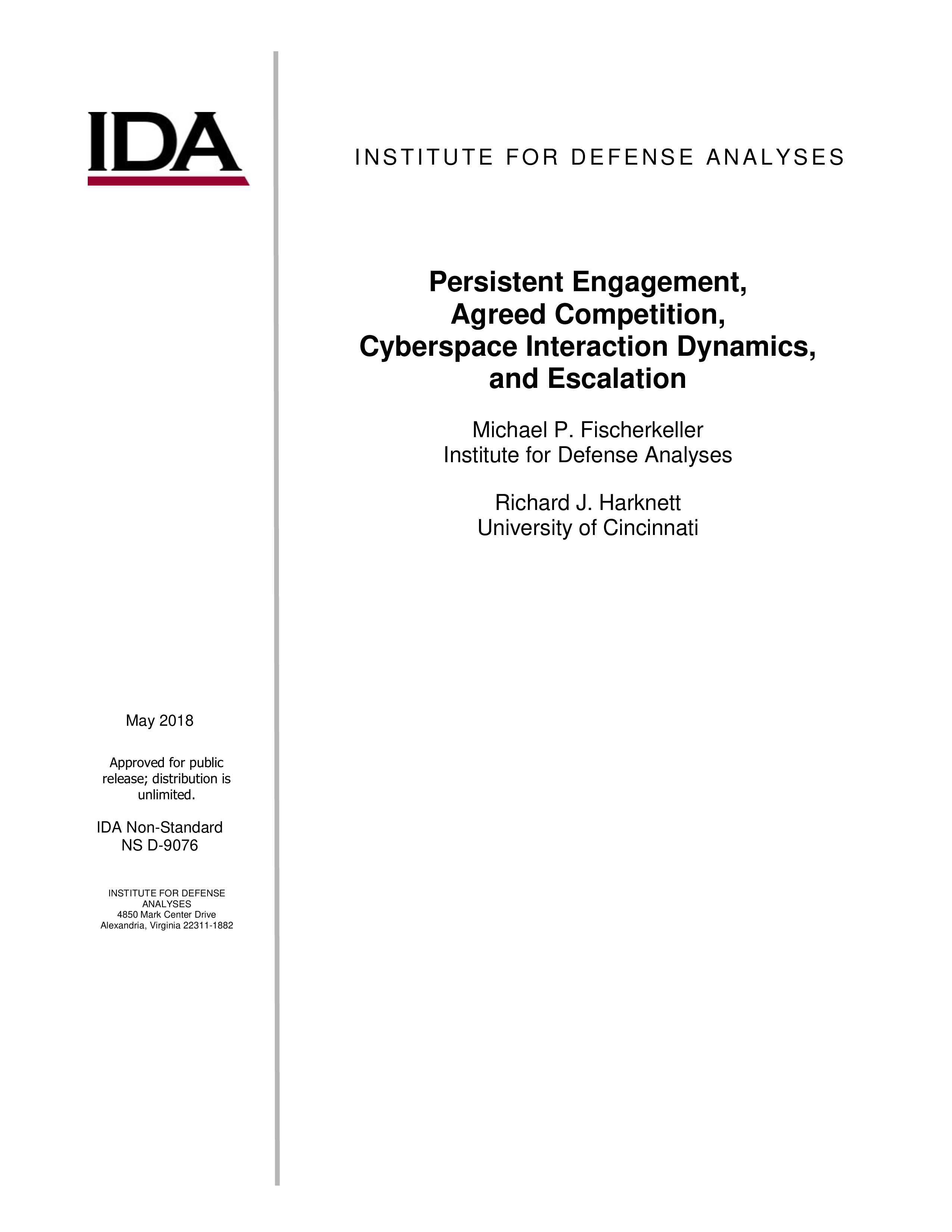A significant concern among policymakers and academics discussing cyber operations is a fear of escalation should states adopt a more proactive posture in cyberspace. Past policy statements and international security scholarship tend to focus narrowly on the escalation dynamics resulting from cyberattacks, or the threat thereof, that might cause physical damage or loss of life. This limited focus on potential and episodic cyber-enabled crises or war scenarios excludes an equally, if not more important, strategic space—actual and continuous strategic competition in cyberspace that does not reach the level of armed conflict. In 2018, U.S. strategic guidance found in the National Security Strategy of the United States of America shifted to emphasize the significance of this competitive space, and United States Cyber Command (USCYBERCOM) prescribed a strategic approach of persistent engagement to contest and counter the ability of adversaries to gain strategic advantage without engaging in armed attack. This article considers this shift in U.S guidance documents and analyzes the potential interaction dynamics in a cyber strategic environment structured by interconnectedness-constant contact-persistent engagement. In so doing, it introduces a distinction between interaction and escalation dynamics, one based on a 21st century adaptation of Herman Kahn’s On Escalation.

